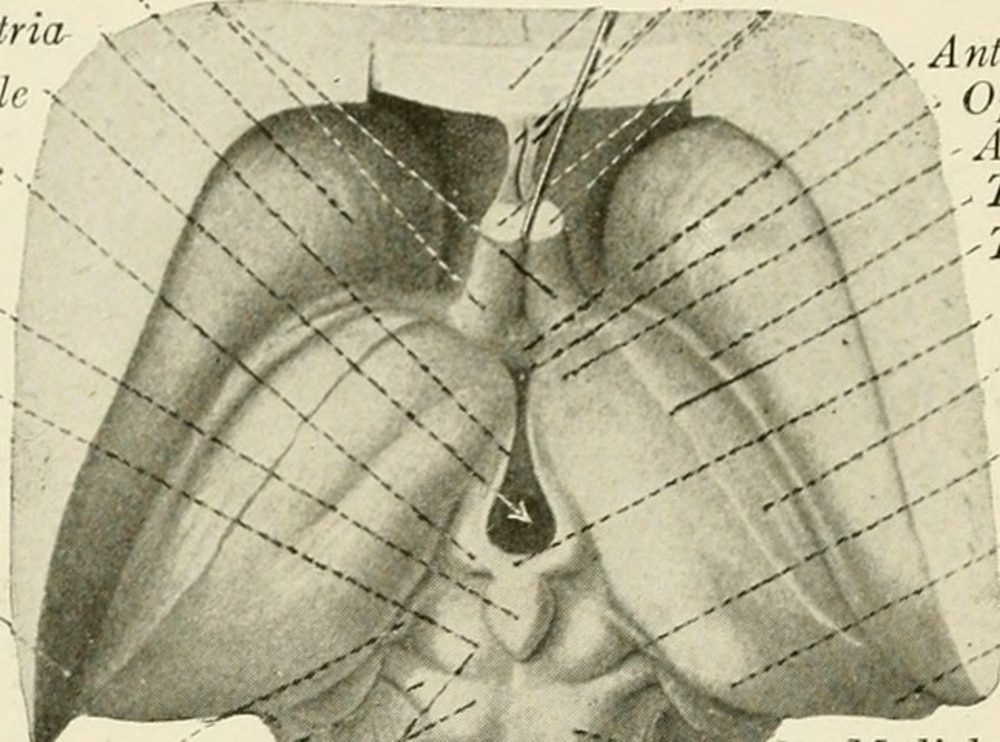The Medial Habenula and Addiction

We’ve been writing a lot lately about the brain’s reward system. It takes a beating from addictive behaviors such as substance abuse or compulsive gambling, resulting in a reward response deficiency. The lower response means it takes more of the behavior or substance to trigger the same level of dopamine release.
A lot of this addiction-related activity is traceable to a region of the brain known as the medial habenula. The medial habenula connects the limbic forebrain to the midbrain, according to neuroscientists. The ventral region of the medial habenula contains dense cholinergic neurons. “The medial habenula is the source of one of the major cholinergic pathways in the brain,” write researchers from the Korea University College of Medicine in Seoul.
The cholinergic system is a network of neurons, receptors, and pathways that use the neurotransmitter acetylcholine for communication. The activity of this neurotransmitter in the medial habenula is implicated in a wide range of compulsive behaviors. Researchers write, “Signaling from the medial habenula cholinergic neurons is involved in drug addiction, including nicotine addiction, nicotine withdrawal symptoms, anxiety, and depression.”
The Medial Habenula and Nicotine Addiction
Studies in mice show that broad optogenetic stimulation of the medial habenula can trigger nicotine withdrawal symptoms similar to those of nicotine-addicted mice. Further, direct application of an acetylcholine antagonist on nicotine-addicted mice can moderate withdrawal symptoms by “modulating downstream serotonin release.”
The Medial Habenula and Drug Addiction
The Korean researchers cite a number of studies connecting drug addiction with disturbances in the medial habenula:
Habenula cholinergic neurons regulate the self-administration of drugs such as cocaine and methamphetamine, as well as the reinstatement of drug-seeking behaviors.
They note that ibogaine, a drug derived from natural substances, “has a therapeutic effect on drug addiction, [and] reduces the self-administration of cocaine, alcohol, and morphine in rodents,” however with “severe side effects.” 18-methoxycoronaridine, a derivative of ibogaine and an acetylcholine antagonist, has been shown to reduce drug-seeking behavior in mice, without the severe side effects.
The Medial Habenula and Depression
“Cholinergic hyperactivity in the brain has long been associated with depressive phenotypes,” write the Korean researchers, continuing:
Downregulation of cholinergic signaling in the habenula, including decreased expression of the genes related to cholinergic signaling, has been demonstrated in an animal model of depression and in suicide victims diagnosed with major depressive disorder.
Three neuroscientists at the Mahoney Institute of Neurological Sciences at the University of Pennsylvania’s Perelman School of Medicine reviewed the role of the medial habenula in anxiety and addiction for the Journal of Neurochemistry. They note that symptoms of withdrawal from addictive drugs overlap with those associated with anxiety and depression.
Therapeutics targeting the medial habenula could “aid in the treatment of addiction to multiple drugs of abuse as well as mood-associated disorders,” according to the researchers. In particular, they note:
SST2 receptor expression in the medial habenula and peripheral SST concentration in plasma were identified as particularly sensitive biochemical indicators of whether an animal would be stress responsive or non-responsive.
The Medial Habenula and Alcohol Use Disorder
Researchers from the Mahoney Institute say that medial habenula is a target for alcohol dependency and “represents a significant component of its affective and behavioral effects.” They assess the use of acetylcholine antagonists in ethanol-addicted mice and find:
Taken together, the literature suggests that activity in the [medial habenula] likely modulates the effects and ingestive behavior of alcohol, as well as its withdrawal symptoms.
Which lead the researchers to the conclusion that “mounting data indicate involvement of the [medial habenula] in both addiction to multiple drugs of abuse and mood-associated conditions” and the medial habenula “may yield strategic targets for pharmacological therapeutics to improve treatment outcomes of both sets of conditions.”
An “Emergency Brake” for the Medial Habenula
Which leads me, finally, to a pair of researchers at Duke University who have just published a paper on their successful work developing said therapeutic for nicotine addiction. The researchers discovered an “emergency brake” in the medial habenula of mice that enabled the mice to protect themselves from nicotine overdose.
“Our discovery significantly advances the understanding of how the brain responds to nicotine, opening new possibilities for treating nicotine addiction,” one of the researchers told Duke University School of Medicine News. “Our findings reveal an atypical inhibitory mechanism, orchestrated by synergistic actions between calcium-permeable and calcium-activated channels,” the researchers write, explaining that it is acetylcholine receptors in the medial habenula that are the target of this “emergency brake.”
Written by Steve O’Keefe. First published April 3, 2025.
Sources:
“The Role of the Medial Habenula Cholinergic System in Addiction and Emotion-Associated Behaviors,” Frontiers in Psychiatry, February 27, 2019.
“The medial habenula and interpeduncular nucleus circuitry is critical in addiction, anxiety, and mood regulation,” Journal of Neurochemistry, August 8, 2017.
“Calcium-activated ion channels drive atypical inhibition in medial habenula neurons,” Science Advances, March 19, 2025.
“Discovery Suggests New Possibilities for Treating Nicotine Addiction,” Duke University School of Medicine News, March 20, 2025.
Image of the anatomy of the nervous system is public domain.




